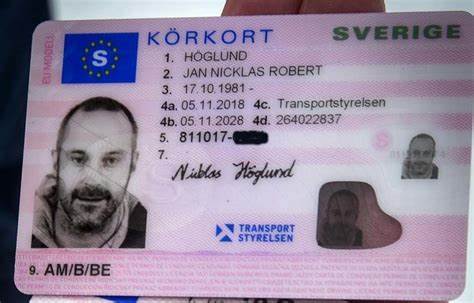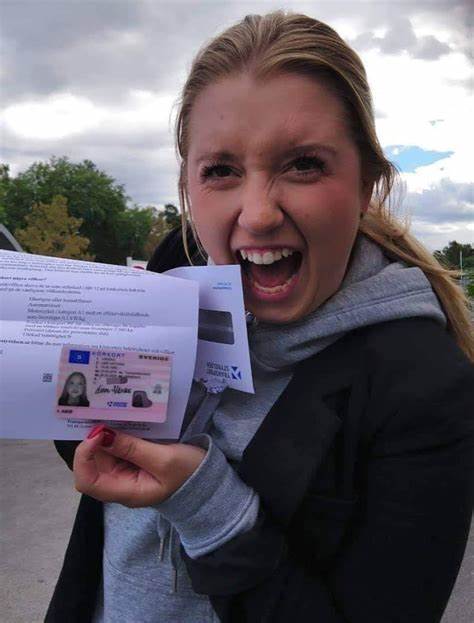How Fast Driver's License Online Was The Most Talked About Trend Of 2024

Navigating the World Without a Driver's License: Exploring Alternatives and Implications
In today's world, where mobility is a foundation of every day life, the idea of living without a driver's license may seem complicated. However, for some people, the choice to forgo a driver's license is a mindful choice driven by different factors, consisting of ecological concerns, cost, and individual choice. This short article dives into the alternatives to driving and the ramifications of living without a driver's license, offering a thorough guide for those considering this lifestyle.

Understanding the Decision
Choosing not to have a driver's license is a personal choice that can originate from a number of factors. For some, it's a dedication to lowering their carbon footprint and promoting sustainable living. Others discover the cost of owning and preserving a lorry excessive, while some merely prefer the benefit and liberty of other modes of transportation. No matter the motivation, living without a driver's license needs mindful planning and a determination to adapt.
Alternatives to Driving
Mass transit
- Buses and Trains: Public transportation systems, such as buses and trains, are often the most reliable and affordable alternatives. They are accessible in a lot of metropolitan areas and offer a structured method to browse cities and rural regions.
- Subway and Light Rail: In bigger cities, trains and light rail systems provide quick and efficient travel, often bypassing rush hour and lowering travel time.
Ride-Sharing Services
- Uber and Lyft: These popular ride-sharing apps offer on-demand transport, making it easy to navigate without a car. They are particularly beneficial for late-night travel and in areas with limited public transport.
- Carpooling: Joining or forming carpool groups can minimize costs and environmental effect. Lots of community platforms and apps help with carpooling for regular commutes.
Bikes and E-Scooters
- Bicycles: Cycling is a healthy and environmentally friendly method to take a trip, particularly for shorter distances. Lots of cities have dedicated bike lanes and bike-sharing programs to motivate this mode of transportation.
- Electric Scooters: E-scooters are a fashionable and practical choice for fast, brief trips. They are typically offered through rental services in city locations and can be a fun option to conventional modes of transport.
Walking and Jogging
- Walking: For those living in walkable communities, strolling is a basic and reliable method to remain active and navigate. It's totally free, needs no unique devices, and benefits the environment.
- Jogging: Similar to walking, jogging can be a healthy and inexpensive method to travel, specifically for brief distances.
Electric and Hybrid Vehicles
- Electric Scooters and Bikes: For those who still desire the benefit of an individual lorry but are concerned about the environment, electrical scooters and bikes are a viable option. They are low-maintenance and produce less emissions.
- Hybrid Cars: If the decision to prevent a driver's license is primarily due to environmental concerns, but the need for a car is inescapable, hybrid automobiles use a middle ground. They integrate conventional fuel engines with electrical motors to decrease fuel intake and emissions.
Telecommuting and Remote Work
- Work from Home: Many business now use remote work alternatives, allowing staff members to work from home or other locations. This can substantially reduce the requirement for everyday commuting and the associated expenses.
- Virtual Meetings: Technology has actually made it possible to conduct company conferences and other interactions practically, more reducing the need for travel.
Implications of Living Without a Driver's License
Financial Savings
- Decreased Vehicle Costs: Not having a car implies preventing costs such as car payments, insurance, maintenance, and fuel.
- Mass Transit Costs: köp körkort På nätet While public transport does have expenses, they are normally lower than those associated with owning a car.
Environmental Impact
- Lower Carbon Emissions: By avoiding the use of individual lorries, individuals can substantially minimize their carbon footprint, adding to a more sustainable environment.
- Decreased Traffic Congestion: Fewer vehicles on the roadway can result in minimized traffic blockage, making travel more efficient for everybody.
Health Benefits
- Increased Physical Activity: Using alternatives like strolling, jogging, and cycling can improve physical health and psychological well-being.
- Decreased Stress: Avoiding the daily troubles of driving, such as traffic and parking, can lead to a more unwinded and worry-free way of life.
Social and Community Engagement
- Community Connections: Relying on public transport or ride-sharing services can cultivate a sense of community and social interaction.
- Assistance for Local Businesses: Walking or cycling to regional companies can help support the local economy and reduce reliance on big, ecologically hostile corporations.
Legal and Practical Considerations
- Recognition Issues: In many countries, a driver's license functions as a primary type of identification. Individuals without a license may need to carry alternative forms of ID, such as a passport or state-issued ID card.
- Travel Restrictions: Without a driver's license, travel to remote locations or locations with limited mass transit can be difficult. Preparation ahead and utilizing alternative transport approaches is essential.
FAQs
Q: How can I navigate if I reside in a backwoods without a driver's license?
- A: In backwoods, options like ride-sharing services, carpooling, and public transport may be limited. Consider joining neighborhood groups or online platforms to discover regional carpooling choices. Electric scooters and bikes can likewise be helpful for shorter ranges. Additionally, numerous backwoods have community transportation services that can be accessed for important trips.
Q: Can I still take a trip globally without a driver's license?
- A: Absolutely. A driver's license is not required for most international travel. However, you might need a passport or other kinds of identification. For countries where driving is needed, you can rent a car with a legitimate driver's license or use regional transport services.
Q: What are the very best apps for discovering ride-sharing and carpooling choices?
- A: Popular apps for ride-sharing consist of Uber, Lyft, and Bolt. For carpooling, Waze Carpool, Ridester, and Scoop are extremely recommended. These apps frequently provide real-time details on readily available rides and help link you with motorists heading in the very same instructions.
Q: How do I manage without a driver's license if it is needed for lots of kinds of identification?
- A: In lots of locations, a state-issued ID card or a passport can act as a main kind of identification. It's likewise a great idea to carry multiple forms of ID, such as a credit card or a voter registration card, to ensure you are prepared for numerous situations.
Q: Are there any health threats associated with using mass transit?
- A: While mass transit can expose individuals to a greater risk of infectious diseases, specifically in crowded conditions, the benefits typically surpass the dangers. Practicing great hygiene, such as cleaning hands frequently and wearing a mask, can assist alleviate these threats. Additionally, numerous public transport systems have actually executed security steps to protect guests.
Q: What are the environmental benefits of not driving a car?
- A: Not driving a car can significantly reduce your carbon footprint. Automobiles are a major source of greenhouse gas emissions, and by selecting public transport, cycling, or walking, you can add to a much healthier environment. This likewise helps minimize air pollution and traffic jam, enhancing overall lifestyle.
Living without a driver's license is a practical and frequently helpful choice for lots of individuals. By exploring and utilizing alternative modes of transport, one can save cash, minimize their environmental effect, and enhance their health and wellness. While there are obstacles, such as navigating recognition and travel concerns, the benefits typically make the effort beneficial. Whether driven by individual values or useful considerations, the choice to forgo a driver's license can lead to a more sustainable and satisfying way of life.
Extra Resources
- Public Transportation Apps: Transit, Moovit, Citymapper
- Biking and Walking Apps: Strava, MapMyRide, Google Maps
- Community Carpooling Platforms: Waze Carpool, Ridester, Scoop
- Remote Work and Telecommuting Tools: Zoom, Microsoft Teams, Slack
By welcoming these alternatives, individuals can develop a way of life that aligns with their worths and needs, adding to a more sustainable and linked world.





